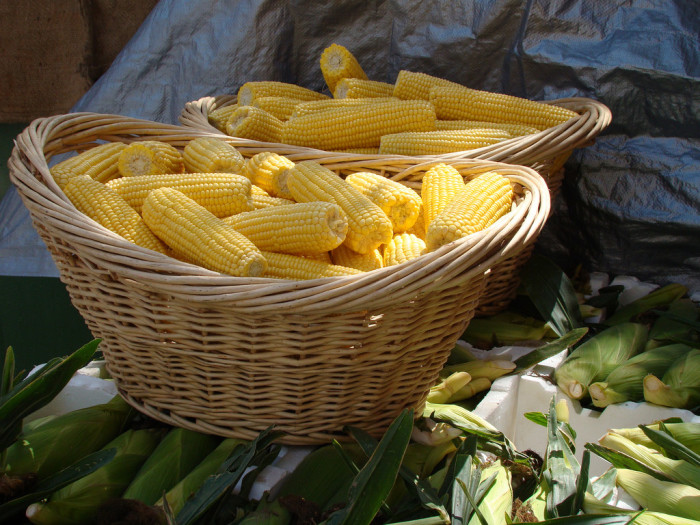Now In Season: Olathe Sweet Corn
This proper noun–worthy sweet corn comes from the town that made it a sensation, Olathe, Colorado, not too far from where chef Marcus Parrott of Smith Fork Ranch in Crawford sources it. "I like Olathe Sweet sweet corn — the preferred name — because it's a good example of an area producing something of its own," says the chef, who looks forward to the harvest each year. "Corn isn't a major crop in much of Colorado, but people found it did well in Olathe, and it's become synonymous with the place. Now people wait for it every year." In fact, the maize proves so popular that for 25 years the town has hosted a festival at the start of the season to celebrate the harvest. But what makes this version of the tried-and-true sweet corn worth highlighting? Naturally, the answer shows up in the taste.
Where It's From
Olathe is a tiny populated area located near Colorado's San Juan mountains, but corn wasn't always grown there. During a depression in the area, farmer Dave Galinat brought his sweet corn hybrid seed operation to the area. Already Galinat had created varieties of sweet corn and thought the hot days and cool nights of Olathe would be the perfect setting for both his plants and his research. He wasn't wrong. Once this patented hybrid took off, the former mayor of the area, John Harold, started growing Olathe Sweet in the 1990s under the moniker Tuxedo Corn Company. Between the unique kernels Galinat brought to the area and Harold's prosperous business, the town of Olathe was saved by corn. To commemorate the rebirth, the community started hosting the Olathe Sweet Corn Festival on first Saturday in August, which brings thousands of corn lovers to the sleepy town and keeps folks hungry for more.
When It's In Season
The season kicks off at the end of July to early August and runs through September. It's as short and sweet as the corn itself.
What To Look For
Though you might not find Olathe Sweet sweet corn all over the country, sweet corn is prevalent throughout the states. When shopping for any sweet corn, look for firm ears with fresh, green leaves covering the buttery yellow and creamy white kernels. You can gently feel along the tip for dry or soggy parts. Some people will also pull back the husk a bit to check for quality, but make sure you check with the purveyor before doing that.
How To Store It
You can keep unshucked corn in a paper bag or a basket in a cool, dry place for weeks. Keeping it in the fridge is also an option, and ears will last a good month. As with nearly all produce, the fresher it is, the better it will taste. You can jar or freeze the kernels to preserve the freshest summer flavor all year long.
How To Prepare It
Chef Parrott grew up in Iowa, where, he says, "we take corn very seriously." So when he came across this version, imagine his surprise to find a corn he liked best of all. "One of the nuances I really like about Olathe corn is its sugar content. Last year, I experimented with some heirloom corn and found it to be more starchy and mealy than I liked. Then there are the varieties that are just too saccharine. But Olathe corn has a nice balance of sweetness, flavor and juiciness."
He says the best way to prepare this sweet corn is by boiling fresh ears for three minutes and eating it with butter and salt. "There are many more ways, of course, but this exemplifies the simplicity of corn, and that's all you really need," says Parrott, who grew up eating it just that way. "I take it to all sorts of other levels, like in a nage [stock], sautéed with potatoes and green beans or chanterelles, or in a bisque [recipe below]." Overall, corn proves super-easy to prepare, and the sweetness of this variety really pops on its own. Eat it raw in a salad (or even straight off the ear), use it to add texture to cornbread or griddle cakes, lightly macerate and make sweet-savory ice cream or try it in a fresh salsa with habanero and lime.
Chilled Corn Bisque
Courtesy of chef Marcus Parrott of Smith Fork Ranch
Around 10 servings
Bisque
Plating
Directions:




